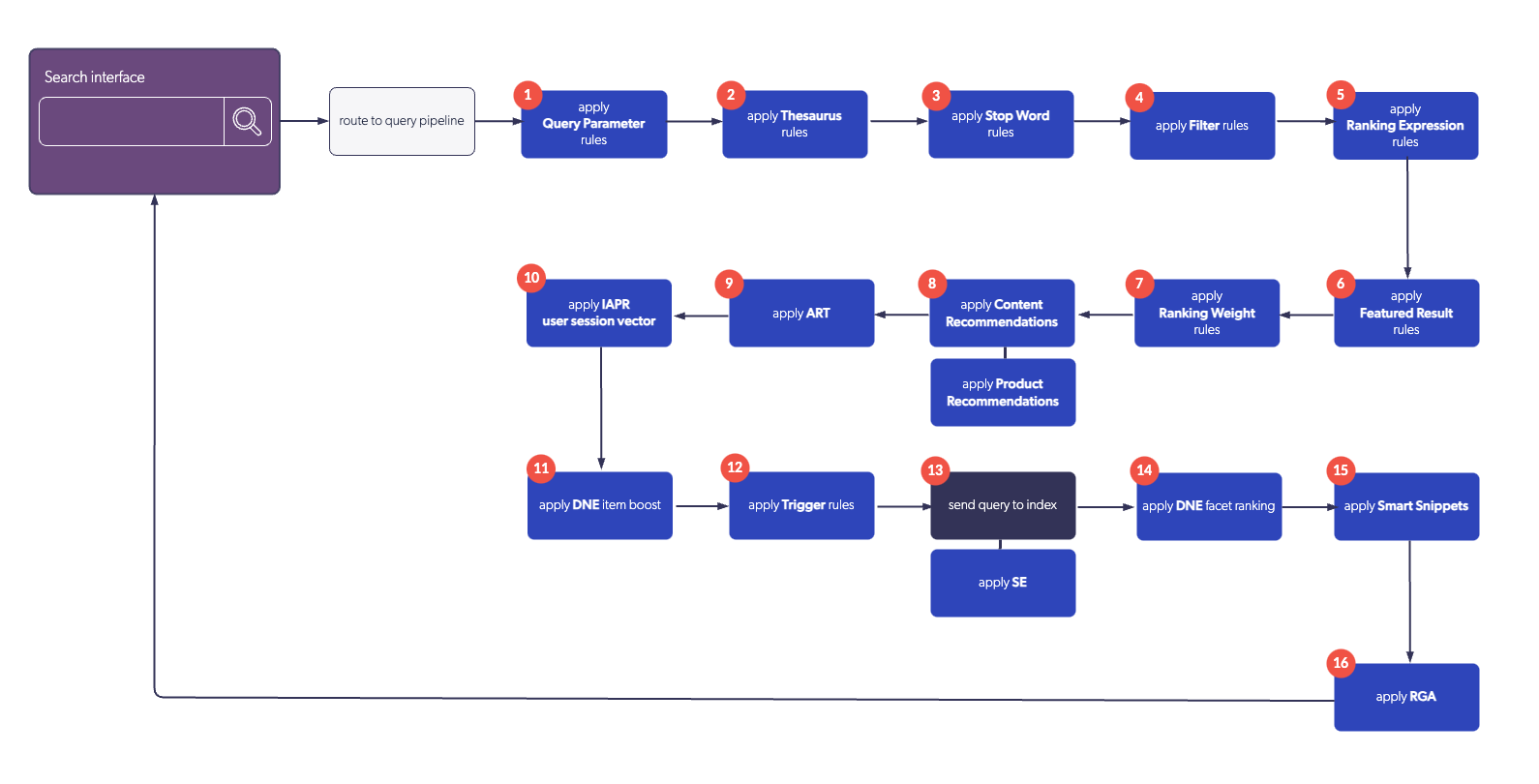What’s a query pipeline?
What’s a query pipeline?
A query pipeline is a set of rules or model associations you can define to modify queries performed in Coveo-powered search interfaces.
You can manage query pipelines using the Coveo Administration Console. When you have multiple search interfaces with distinct users and purposes, you can use query pipelines in your Coveo organization to apply different rules or models for each interface.
Your customers and partners use your community portal to self-serve and find relevant information, while your support agents use an internal service portal to find relevant public and private items. You can create a separate pipeline for each portal, defining appropriate rules for each search interface audience.
You can also use the query pipeline’s A/B testing feature to evaluate rule or model changes on a subset of users.
Query pipeline rules
Query pipeline rules can define the following:
-
-
Thesaurus entries - replacing or expanding queries with synonyms.
-
Stop words - ignoring unimportant words in queries.
-
-
-
Featured results - items appearing at the top of search results when the query meets a specific condition.
-
Ranking expressions - modifying the order of results matching specified expressions and conditions.
-
-
Groups & campaigns - grouping sets of result ranking rules that apply for specific contexts, audiences, or periods of time.
-
-
Filters - adding hidden query expressions to all queries that go through the query pipeline.
-
Query parameters - overriding search parameter values for every query that goes through the query pipeline.
-
Ranking weights - establishing the impact of ranking factors when establishing the order of results.
-
Triggers - establishing actions to be performed in the user search interface following an event when a condition is met.
-
Query pipeline model associations
The following models can be associated to a query pipeline:
-
Relevance Generative Answering (RGA) - generating answers to complex user queries using generative AI technology.
-
Semantic Encoder (SE) - optimizing search results relevance based on semantic similarity using vector-based search.
-
Automatic Relevance Tuning (ART) - optimizing search results relevance based on user search behavior.
-
Query Suggestions (QS) and Predictive Query Suggestion (PQS) - suggesting queries to users as they type in a search box.
-
Content Recommendation (CR) - predicting and proposing the most relevant content for the current user in the current session.
-
Dynamic Navigation Experience (DNE) - reordering facets and facet values to place the most relevant at the top.
-
Product Recommendation (PR) - suggesting relevant products to end users navigating Coveo-powered commerce solutions.
-
Intent-Aware Product Ranking (IAPR) - ranking products on a search results page based on the visitor’s shopping intent.
-
Smart Snippets - displaying a snippet of the most relevant result item directly on the results page.
See Manage models.
The features you define in a query pipeline are applied to all queries before they’re sent to the index.
Order of execution
The following diagram illustrates the order of execution of query pipeline features:

What’s next?
Learn how to create and use a query pipeline.